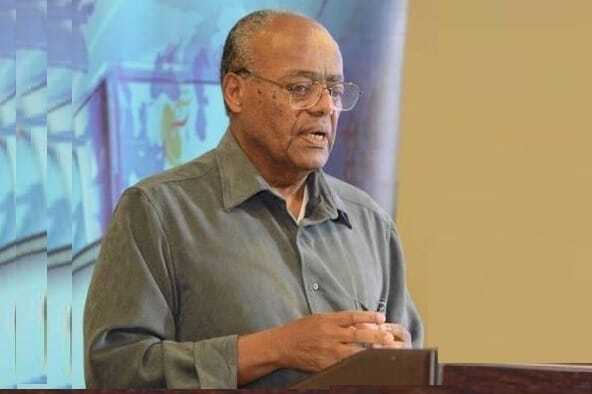Glass stores lining the prime business area of Camp Johnson Road were being smashed, and stores were being looted as young people ran in the streets chanting slogans calling for the downfall of the government, while some hooligans had a field day looting private businesses.
Government soldiers were firing live shots into the skies, and some were even firing directly into the crowd of demonstrators in central Monrovia, killing and wounding many people. The government seemed on the brink of falling. Crack Guinean troops landed at the RIA to help contain the situation, and Liberia has never been the same since.
In 1979, the government of President William R. Tolbert, with his Agriculture Minister Florence Chenoweth, increased the price of a 100-pound bag of rice from US$9.50 to US$15. It did not help that President Tolbert’s family members were significant rice producers. While the government argued that increasing rice prices would benefit local farmers and decrease the amount of rice imported to Liberia, that argument did not hold water for the urban poor. Say that to a hungry man in Soniwhein or a mother in New Kru Town struggling to feed her three children that, an increase in the price of rice will benefit a farmer in Lofa or Nimba and increase rice production. Firebrand opposition leaders like D. Karn Karlor and Baccus Mathews, looking to galvanize public opinion toward the government, could not let this opportunity slip by. Soon, the Progressive Alliance of Liberia (PAL) sent demonstrators into the streets of Monrovia. So, on April 14, 1979, a devastating rice riot occurred in Monrovia. Young soldiers overthrew the Tolbert government a year after the April 14 Rice Riot.
Ever since April 14, 1979, every government in Liberia has considered the rice issue anathema, something never to be played with. The number one priority of every government since then has been to keep the price of rice low, especially for urban consumers, or else popular protest could make the government fall.
The statistics on rice in Liberia are startling. According to World Bank, African Development Band and OED publications, the average Liberian consumes 133 kilograms (293 pounds) of rice per year, the highest in Africa.20% of all food intake in Liberia is rice, and 15% of household budgets is spent on buying rice. Out of the more than 22 million bags of rice imported into Liberia annually by Fouta Corporation, K&K Corporation, United Commodities Inc. and others, if each rice importer makes a $1 profit per bag of rice, that translates into a cool 1 million dollars. Now, if you were a rice importer in Liberia, would you want that situation of a gold mine of rice importation to change?
Liberia imports more than two-thirds of its rice, which is needed for domestic consumption.
The reasons for this are complex: low farming yield of farms because of lack of fertilizers and seeds; subsistence farming methods mainly using cutlasses and hoes; bad roads to take agricultural products to markets; a preference for foreign rice and foreign things generally by Liberians; and low government priority in the national budget.
Growing up, I heard phrases like, “Me and mine children can eat pusawa’, or “Me and my children na like country rice, it too heavy.”
Rural-urban migration is a factor in the national psyche regarding low agriculture productivity because most young Liberians prefer hawking in the streets or working for a monthly wage rather than working for themselves in agriculture. In his book The Mask of Anarchy, Professor Stephen Ellis writes about the Liberian civil war and the attitudes of young fighters (and I paraphrase)–while young Liberian men castigated others for living in the city, the fighters themselves were anxious to enjoy the softness and luxury of city life.
For some inexplicable reason, Liberia spent a paltry 1% of its entire budget on agriculture. The Maputo and Malabo declaration by the African Union recommends that 10% of National budgets be spent on Agriculture.
Every year, we spend a staggering $200 million on rice imports from India, Vietnam, and the United States, while praying that the price of a bag of rice will remain low so that our families can eat.
The challenge is that, for example, instead of the government accepting free rice donations from the government of Japan to sell, the government could at least ask the Japanese government to insist that the funds be invested for local farmers to grow the rice and the government buy the rice produced from the aid money. Instead of the WFP bringing cheap care food to under-cut farmers, they should buy the food from local farmers and use it in their school and hospital feeding programs. Furthermore, there should be greater emphasis on farm-to-market roads and building a national road system to enable farmers to bring their produce to the market. All government catering programs could be incentivized to use locally produced food and vegetables. The budget of the Ministry of Agriculture should be increased to at least 5% of Liberia’s government’s recurrent budget. Lastly, the government of Liberia should purchase and distribute 100 small rice mills to farmer cooperatives in all of Liberia’s 15 counties. Under President Jerry Rawlings, Ghana increased food production by over 100% in ten years. We could do the same with our abundant rainfall, 600,000 hectares of arable land, of which only 10% is being utilized, and a youthful population. Otherwise, we will remain slaves to foreign rice producers in India while the rice importers grow rich. (Below, Liberians rejoice on April 12, 1980)
The Author:
Nemen Martin Kpahn is a Liberian currently residing in Australia. He holds a master’s degree in communication from Griffith University and a Master of Science degree in research from the University of Southern Queensland. Kpahn is pursuing a PhD at the University of Southern Queensland and writes regularly on Liberian politics and society. Mobile number +61457621390










